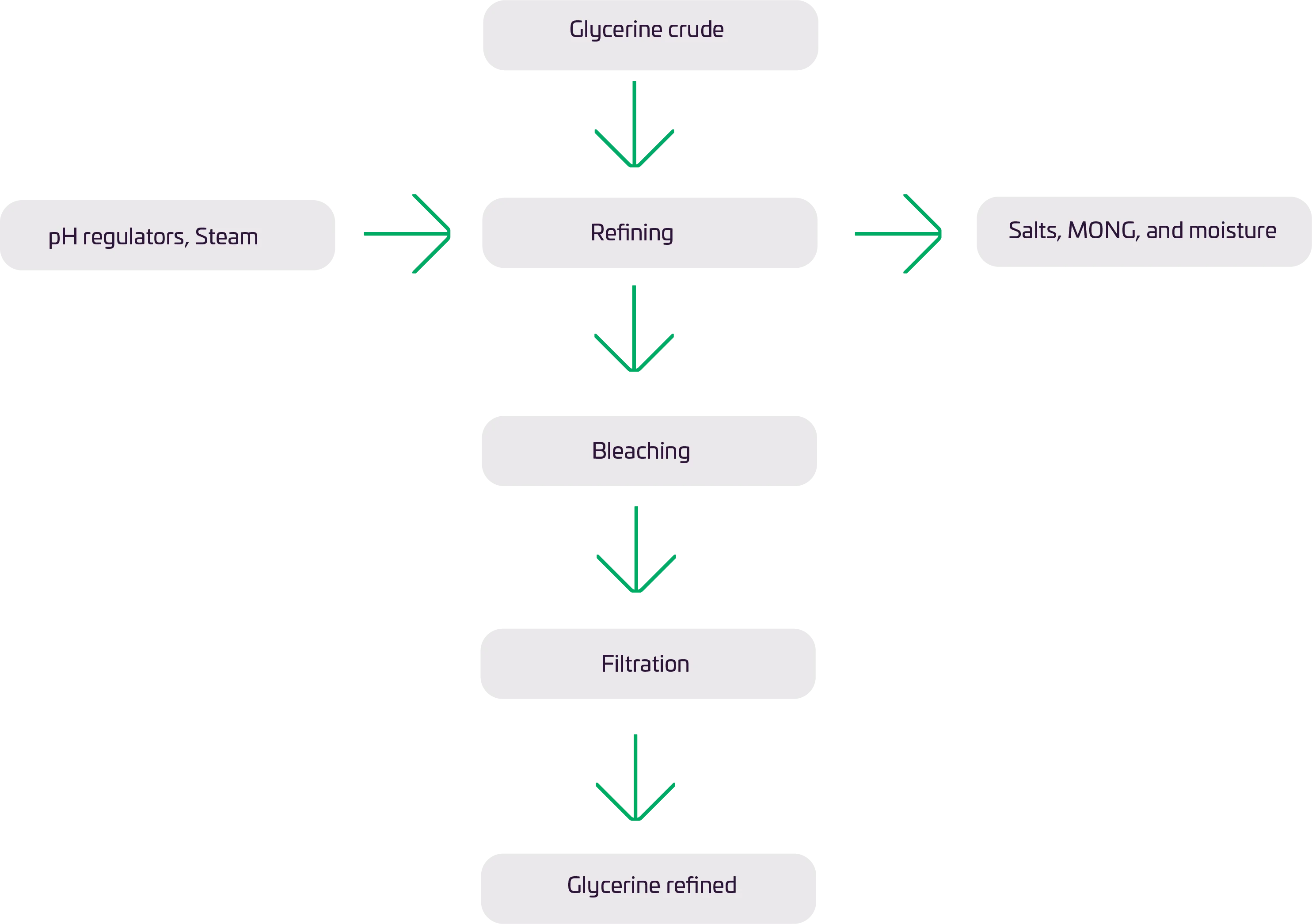What is Glycerine ?
Glycerine, also called Glycerol, is a multifunctional product created from the production of biodiesel by transesterification of oils and fats, which is then refined in to glycerine.
It is a non-toxic, water-soluble, colourless, odourless, clear and viscous liquid with a high boiling point.
Glycerine has good antimicrobial and antiviral properties and is hygroscopic in nature.
Our glycerine is purely made from vegetable oil and is used for food, feed, medical, cosmetic and technical applications.
The glycerine is treated and purified several times until it has a purity of more than 99.5%.
Chemical and Physical Properties of Glycerine
| Chemical Formula: | C3H8O3 (C3H5(OH)3) |
| Chemical name: | 1, 2, 3-propanetriol / Propane-1, 2, 3-triol / Trihydroxypropane |
| CAS No: | 56-81-5 |
| INCI: | Glycerine (Vegetable origin) |
| E-number: | E-422 |
Viterra's high-quality glycerine
Viterra produces high quality vegetable glycerine, manufactured for food, feed, medical, cosmetic and technical applications.
We are one of the leading glycerine producers in Europe. Our portfolio consists of two refined glycerine grades (99.5% and 99.7%) with variations depending on requirements, such as specific raw material, certification or quality:
- European Pharmacopoeia (EP)
- United States Pharmacopeia (USP)
- E-422 (Food)
- FSSC 22000
- GMP+ (Feed)
- Non-GMO
- Non-Palm, Palm free
- pure rapeseed
- Kosher
- Halal
In our own on-site laboratory, we perform intensive checks on the quality of our products using a number of parameters.
Viterra glycerine production process:

Uses of glycerine
Glycerine is hygroscopic, making it an important ingredient in cosmetic items such as creams, gels and toothpastes. It retains moisture and prevents dehydration.
Glycerine serves as a humectant, solvent, and sweetener and can help extend the shelf life of food. It is also used as a thickener.
Retains moisture in dry food and improves taste, is also a source of glucose.
Used in antifreeze, lubricants and as a reactant in the production of dyes, paints, plastics and microchips.
Used in medical, pharmaceutical and personal care products, often as an agent to provide lubrication and as a humectant.
-0068.webp)